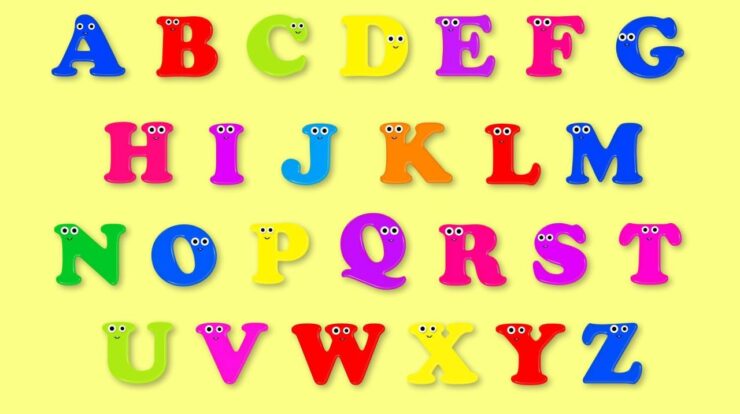Kicking off with the title “Bland Diet Food List PDF,” this paragraph aims to captivate and engage readers with a casual yet formal tone. Let’s dive into the topic and explore the benefits of following a bland diet and how it can help with digestive issues, weight loss, and food allergies.
We’ll also discuss nutritional considerations and provide helpful tips for incorporating bland foods into your meals.
Bland Diet Food List
A bland diet is a type of eating plan that consists of foods that are gentle on the digestive system and low in spices, fats, and fiber. It is often recommended for individuals who are experiencing gastrointestinal issues such as gastritis, ulcers, or after certain surgeries.
The purpose of a bland diet is to reduce irritation and inflammation in the digestive tract, allowing it to heal and recover.
Foods Included in a Bland Diet, Bland diet food list pdf
When following a bland diet, it is important to focus on consuming foods that are easily digestible and not likely to cause discomfort or irritation. Some common foods included in a bland diet are:
- White bread
- Plain crackers or rice cakes
- Cooked cereals like oatmeal or cream of wheat
- Boiled or baked potatoes
- Soft-cooked or scrambled eggs
- Lean meats, such as chicken or turkey
- Steamed or boiled vegetables, like carrots or green beans
- Plain yogurt or cottage cheese
- Mashed bananas or applesauce
- Smooth peanut butter or almond butter
- Plain pasta or noodles
Benefits of Following a Bland Diet
Following a bland diet can provide several benefits for individuals with digestive issues. Some of the benefits include:
- Reducing irritation and inflammation in the digestive tract
- Minimizing symptoms such as stomach pain, bloating, and diarrhea
- Promoting healing and recovery after gastrointestinal surgeries or procedures
- Providing easily digestible nutrients to support overall health and well-being
Tips for Incorporating Bland Foods into Meals
Incorporating bland foods into meals can be done in a variety of ways to ensure a balanced and satisfying diet. Here are some tips:
- Experiment with different cooking methods such as steaming, boiling, or baking to prepare bland foods.
- Add flavor to bland foods with herbs and spices that are gentle on the digestive system, such as ginger, cinnamon, or turmeric.
- Include small portions of bland foods in meals alongside other non-irritating ingredients for added variety and taste.
- Try different combinations of bland foods to create simple and flavorful dishes, such as a chicken and vegetable stir-fry with plain noodles.
- Gradually reintroduce more flavorful foods into your diet as your digestive system improves, while still maintaining a balance with bland foods.
Bland Diet for Digestive Issues: Bland Diet Food List Pdf
A bland diet can be beneficial for individuals experiencing digestive issues such as gastritis or gastroenteritis. This type of diet focuses on consuming foods that are easy to digest and gentle on the stomach. It can help alleviate symptoms such as stomach pain, bloating, indigestion, and nausea.
Foods Gentle on the Digestive System
When following a bland diet for digestive issues, it is important to choose foods that are gentle on the digestive system. These include:
- Lean proteins such as skinless poultry, fish, and tofu
- Soft cooked vegetables like carrots, green beans, and zucchini
- White rice, plain pasta, and oatmeal
- Low-fat dairy products such as milk, yogurt, and cottage cheese
- Applesauce, bananas, and melons
- Smooth nut butters
It is advisable to avoid raw vegetables, high-fiber foods, and tough meats as they can be harder to digest and may worsen digestive symptoms.
Importance of Avoiding Spicy, Acidic, and Fatty Foods
Spicy, acidic, and fatty foods can irritate the digestive system, leading to increased symptoms in individuals with digestive issues. These types of foods should be avoided when following a bland diet. Spices like chili powder, hot sauce, and pepper can trigger inflammation and worsen gastritis symptoms.
Acidic foods such as citrus fruits, tomatoes, and vinegar can increase stomach acid production, causing discomfort. Fatty foods, particularly those high in saturated and trans fats, take longer to digest and can exacerbate digestive problems.
Sample Meal Ideas for a Bland Diet
Here are some sample meal ideas that can be included in a bland diet to alleviate digestive symptoms:
- Breakfast: Oatmeal with mashed bananas and a side of low-fat yogurt
- Lunch: Baked skinless chicken breast with steamed carrots and white rice
- Snack: Applesauce and smooth peanut butter
- Dinner: Grilled fish with boiled zucchini and a small portion of plain pasta
- Snack: Melon slices
Remember to choose cooking methods such as baking, steaming, or grilling instead of frying, as they are gentler on the digestive system.By following a bland diet and avoiding trigger foods, individuals with digestive issues can help manage their symptoms and promote better digestion.
Nutritional Considerations on a Bland Diet
Following a bland diet can present challenges in obtaining all the necessary nutrients for optimal health. The restrictive nature of the diet, which limits the consumption of spicy, acidic, and high-fat foods, can make it difficult to meet nutritional needs.
However, with careful planning and the inclusion of nutrient-rich foods, it is possible to ensure adequate nutrient intake while following a bland diet.
Ensuring Adequate Nutrient Intake
To ensure you are getting all the necessary nutrients on a bland diet, consider the following tips:
- Include a variety of fruits and vegetables: Despite the limitations on certain types of fruits and vegetables, there are still many options available. Opt for softer varieties such as bananas, melons, cooked carrots, and spinach. These can provide essential vitamins, minerals, and fiber.
- Choose lean proteins: Incorporate lean sources of protein such as skinless poultry, fish, tofu, and legumes. These foods can provide essential amino acids and iron.
- Include whole grains: Opt for whole grain options such as brown rice, quinoa, and whole wheat bread. These can provide fiber, B vitamins, and minerals.
- Consume dairy or dairy alternatives: If tolerated, include low-fat dairy products or dairy alternatives fortified with calcium and vitamin D to ensure adequate intake of these nutrients.
Nutrient-Rich Foods for a Bland Diet
Here are some nutrient-rich foods that can be included in a bland diet:
- Plain yogurt: Provides probiotics for gut health and is a good source of protein and calcium.
- Oatmeal: High in fiber and can be topped with mashed bananas or a small amount of honey for added flavor.
- Soft-cooked eggs: A good source of protein and can be seasoned with a small amount of salt and herbs.
- Lean meats: Skinless poultry and fish are excellent sources of protein, iron, and other essential nutrients.
- Avocado: A nutrient-dense fruit that provides heart-healthy fats, fiber, and various vitamins and minerals.
Role of Supplements
In some cases, supplements may be necessary to support nutrition on a bland diet. However, it is important to consult with a healthcare professional before starting any supplements. They can assess your individual needs and recommend appropriate supplements, such as a multivitamin or specific nutrient supplements, to ensure you are meeting your nutritional requirements.
Bland Diet for Weight Loss
A bland diet can be beneficial for weight loss due to its focus on low-calorie and easily digestible foods. By following a bland diet, individuals can control their calorie intake and make healthier food choices, which can contribute to weight loss.One
of the ways a bland diet helps control calorie intake is by eliminating or reducing high-calorie and fatty foods. This includes foods that are often processed, fried, or heavily seasoned. Instead, a bland diet emphasizes simple and natural foods that are lower in calories and fat.Here
are some examples of low-calorie, bland foods that can aid in weight loss:
1. Fruits and Vegetables
Include a variety of fruits and vegetables in your bland diet. These foods are high in fiber, which can help you feel fuller for longer and reduce overall calorie intake. Opt for fresh or steamed options to retain their nutritional value.
2. Lean Proteins
Choose lean proteins such as skinless chicken, turkey, fish, and tofu. These options are lower in calories and fat compared to fatty cuts of meat. Grilling, baking, or steaming these proteins can help maintain their nutritional content.
3. Whole Grains
Incorporate whole grains like brown rice, quinoa, and whole wheat bread into your diet. These foods are rich in fiber, which aids in digestion and helps control appetite. Avoid refined grains like white bread and white rice, as they are higher in calories and have less nutritional value.
4. Legumes
Include legumes like lentils, chickpeas, and black beans in your meals. These foods are high in protein and fiber, which can help you feel satisfied and prevent overeating. They are also low in fat and calories, making them a great addition to a weight loss-focused bland diet.
5. Low-Fat Dairy
Choose low-fat dairy options such as skim milk, low-fat yogurt, and reduced-fat cheese. These foods provide calcium and protein while being lower in calories compared to full-fat dairy products. Avoid dairy products that are high in fat, such as whole milk and full-fat cheese.It’s
important to practice portion control and mindful eating while on a bland diet for weight loss. Pay attention to your hunger and fullness cues, and avoid overeating. Consider using smaller plates and bowls to help control portion sizes. Additionally, be mindful of your eating habits and avoid distractions while eating, such as watching TV or using electronic devices.Remember,
weight loss is a gradual process, and it’s important to consult with a healthcare professional or registered dietitian before starting any new diet or weight loss plan. They can provide personalized guidance and ensure your nutritional needs are being met while on a bland diet for weight loss.
Bland Diet and Food Allergies

A bland diet can be beneficial for individuals with food allergies or sensitivities. By eliminating common allergens from the diet, it helps reduce the risk of allergic reactions and gastrointestinal discomfort. The purpose of a bland diet is to provide easily digestible foods that are gentle on the digestive system.
Common Allergens Avoided on a Bland Diet
When following a bland diet, it is important to avoid common allergens that can trigger allergic reactions. Some of the common allergens that are typically eliminated from a bland diet include:
- Dairy products: Milk, cheese, butter, and other dairy products contain lactose and casein, which can cause allergic reactions.
- Wheat and gluten: Foods like bread, pasta, cereals, and baked goods that contain wheat or gluten should be avoided as they can cause allergic reactions in individuals with gluten intolerance or celiac disease.
- Eggs: Eggs are a common allergen and should be avoided on a bland diet.
- Soy: Soy products, including soy milk, tofu, and soy sauce, should be eliminated from the diet as they can cause allergic reactions.
- Shellfish and fish: Shellfish and fish are known allergens and should be avoided on a bland diet.
- Nuts and peanuts: Peanuts, almonds, walnuts, and other nuts should be excluded from the diet as they can trigger allergic reactions.
Alternative Options for Allergenic Foods in a Bland Diet
While following a bland diet, it is important to find alternative options for allergenic foods to ensure a balanced and nutritious diet. Here are some alternative options for common allergenic foods:
- Dairy alternatives: Opt for lactose-free milk, almond milk, coconut milk, or other dairy-free alternatives.
- Gluten-free grains: Replace wheat products with gluten-free alternatives such as rice, quinoa, oats (if tolerated), and corn.
- Plant-based proteins: Replace eggs and soy with plant-based proteins like lentils, beans, chickpeas, and tofu alternatives like tempeh.
- Non-allergenic protein sources: Choose lean meats like chicken, turkey, and fish that are not allergenic for most individuals.
- Seed butters: Substitute peanut butter with seed butters like sunflower seed butter or tahini.
Tips for Navigating a Bland Diet While Managing Food Allergies
Navigating a bland diet while managing food allergies can be challenging, but with some tips, it can be made easier:
- Read labels: Always read food labels carefully to identify potential allergens and choose suitable options.
- Meal planning: Plan your meals in advance and ensure they are allergen-free by preparing them at home.
- Experiment with new recipes: Explore new recipes that are specifically designed for individuals with food allergies and adapt them to fit a bland diet.
- Consult a dietitian: Seek guidance from a registered dietitian who can help you create a personalized bland diet that accommodates your food allergies.
- Keep a food diary: Keep track of your meals and any symptoms or reactions you experience to identify potential food allergens.
Epilogue
In conclusion, this comprehensive guide has shed light on the importance of a bland diet and its various benefits. By following the suggested food list and incorporating these tips, you can improve your digestive health, manage your weight, and navigate food allergies more effectively.
Remember to consult a healthcare professional or nutritionist for personalized advice. Start your journey towards a healthier lifestyle with the help of this bland diet food list PDF.
FAQ Explained
What is a bland diet and why is it recommended?
A bland diet consists of gentle, easy-to-digest foods that are low in fiber, fat, and spice. It is recommended for individuals with digestive issues, such as gastritis or gastroenteritis, to provide relief and promote healing.
What foods are typically included in a bland diet?
Typical foods in a bland diet include boiled or baked lean meats, cooked vegetables, white bread, rice, oatmeal, and non-citrus fruits. It’s important to avoid spices, fatty foods, caffeine, and alcohol.
How can a bland diet help with weight loss?
A bland diet can aid weight loss by controlling calorie intake, as it focuses on low-calorie and nutrient-rich foods. Portion control and mindful eating are also emphasized to promote successful weight management.
Can a bland diet be beneficial for individuals with food allergies?
Yes, a bland diet can be helpful for individuals with food allergies or sensitivities. It eliminates common allergens and provides alternative options to manage symptoms while ensuring proper nutrition.
How can I ensure adequate nutrient intake on a bland diet?
To ensure adequate nutrient intake, incorporate nutrient-rich foods such as lean proteins, whole grains, fruits, and vegetables into your bland diet. Additionally, consult a healthcare professional or nutritionist for personalized guidance and consider the use of supplements if necessary.


